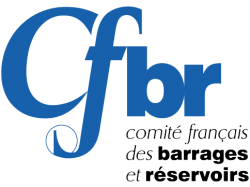doi_cfbr_colloque2018_p1
Diagnostic exhaustif (ex. Examen Technique Complet) d’ouvrages de grand linéaire (canaux) sans vidange
Isabelle Penot (EDF-UP Méditerranée), Bruno Daumas et Jean Robert Courivaud (EDF-CIH), Coralie Bilger (DREAL PACA), Stéphan Aigouy (BETCGB)
Éditeur : Comité Français des Barrages et Réservoirs - CFBR - ISBN 979-10-96371-06-8
Colloque : Méthodes et techniques innovantes dans la maintenance et la réhabilitation des barrages et des digues - Chambéry, France
Année d’édition 2018
Téléchargement : Actes du colloque
Title : Comprehensive diagnosis of long linear embankment hydraulic structures without emptying
Résumé
Dans le cadre de la mise en œuvre du décret 2007-1735, tout Examen Technique Complet (nouvellement dénommé Diagnostic Exhaustif dans le décret 2015-526) d’un canal de la Durance était adossé à une vidange totale de l’ouvrage pour examen visuel de son parement intérieur. Dans les années 2010, constat a été fait que ces modalités d’examen par vidange n’apportaient pas complète satisfaction. En conséquence, en concertation avec l’ Administration , EDF a recherché et mis en application une nouvelle approche. Au regard des grands linéaires à investiguer, la méthode, déroulée canal en eau, s’appuie sur des reconnaissances à grand rendement suivies d’investigations locales sur les profils le nécessitant. In fine, l’objectif principal est de localiser et caractériser d’éventuelles zones de fuite à travers les remblais ou la fondation qui pourraient présenter un risque significatif pour la sûreté de l’ouvrage (risque d’érosion interne principalement) et celles qui seraient susceptibles d’évoluer vers un stade où elles pourraient présenter un tel risque. La réalisation des examens canal en eau permet de mettre en évidence d’éventuelles fuites qui n’auraient pas été identifiées si le canal avait été vidangé. Entre 2012 et 2015, quatre Examens Techniques Complets de canaux, pour un linéaire total investigué de 47 kilomètres, ont été réalisés avec cette nouvelle méthodologie. Constatant avec EDF un retour d’expérience positif, la DREAL et le BETCGB ont validé son déploiement général lors de la réalisation des diagnostics exhaustifs à venir.
Abstract
As part of the implementation of Decree 2007-1735, any Full Technical Review (newly named Exhaustive Diagnosis in Decree 2015-526) of a Durance canal was realized by a total emptying of the structure allowing the visual inspection of the internal slopes of the structures. In the 2010s, it was found that these methods of examination by emptying did not bring complete satisfaction. As a result, in consultation with public authorities (DREAL PACA and BETCGB), EDF proposed a new approach. Considering the great lengths to be investigated, the method is run on filled channel and relies on high-performance surveys followed by local investigations on the profiles that require it. Ultimately, the main objective is to locate and characterize any areas of leakage through embankments or foundations that would not have been identified if the canal had been drained. The leaks sought in this context are only those that would pose a significant risk to the safety of the structure (risk of internal erosion mainly) and those that could evolve to a stage where they could present such a risk. Between 2012 and 2015, four complete technical examinations of channels, for a total investigated linear of 47 kilometers, were realized with this new method. With positive feedback from EDF, DREAL and BETCGB validated its general deployment for the exhaustive diagnosis to come.
Citation
PENOT Isabelle,DAUMAS Bruno, COURIVAUD Jean Robert, BILGER Coralie, AIGOUY Stéphan. Diagnostic exhaustif (ex. Examen Technique Complet) d’ouvrages de grand linéaire (canaux) sans vidange. In Colloque Méthodes et techniques innovantes dans la maintenance et la réhabilitation des barrages et des digues. Chambéry : CFBR - 27,28 novembre 2018. ISBN 979-10-96371-06-8. p. 359-369. doi : 10.24346/cfbr_colloque2018_p1
Voir aussi : Colloque Méthodes et techniques innovantes dans la maintenance et la réhabilitation des barrages et des digues

Cette œuvre est mise à disposition selon les termes de la licence Creative Commons Attribution - Pas d’Utilisation Commerciale – Pas de Modification 3.0 France.


